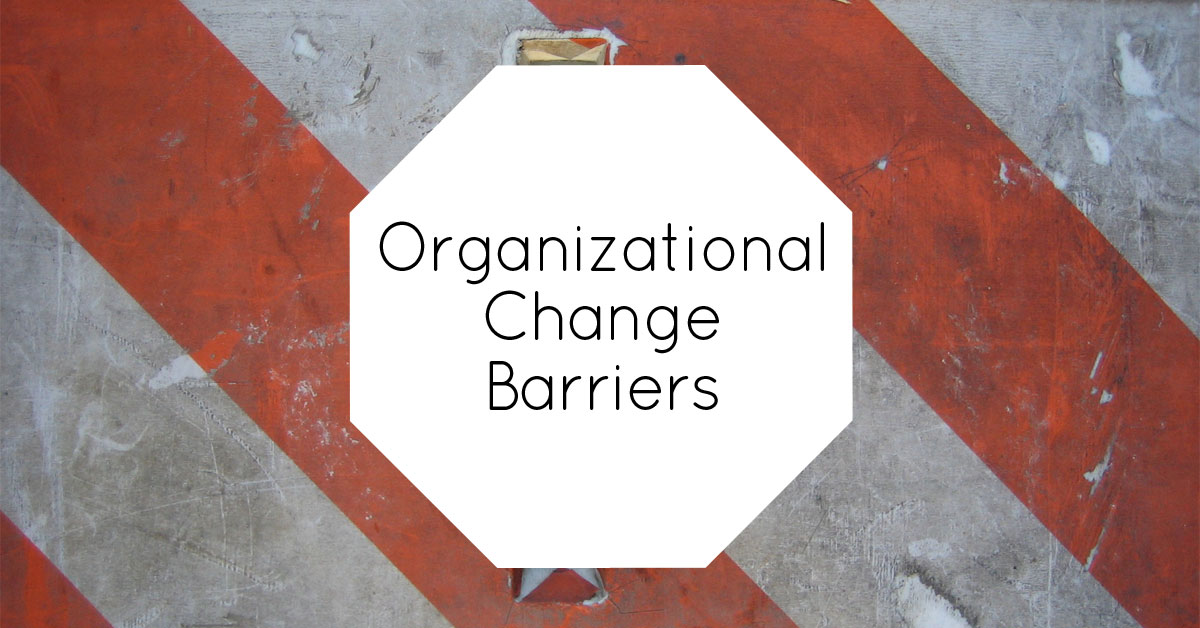
Formal leaders and the individuals in organizations can usually get into quite a story of what is wrong in their organizations. They may have different opinions about the cause. There are usually many opinions on the best solution too. But talking about problems is a common occurrence. When the story gets too big or too loud, that’s often when formal leaders seek outside help to make a change.
In my organizational consulting work, I like to begin from my deeply held belief that both the formal leaders and the individuals in organizations want things to be better. Everyone wants to feel good about their work in the organization and that their work makes a difference.
But a conundrum exists. Everyone is talking about what is wrong. They are also giving opinions about how to turn things in a better, more productive, harmonious direction. So, why isn’t a change for the better happening?
There are 4 common organizational change barriers that often get in the way. Organizations may recognize that there is a problem. They may be attempting to ‘fix the problem’. In our experience these organizational change barriers must be addressed as part of the solution.
While these answers are generalizations, they have been true for 100% of the organizations we have worked for to accomplish an organizational transformation.
Right Conversations at the Right Time
The important conversations about issues and opportunities are not taking place in the organization in ways that they can be heard. They are often taking place at the water fountain, coffee pot, parking lot, and at the kitchen table at home. The people who want to give input for improvements cannot find the space to do so in the organization. Specifically, they cannot find a way to give input that would be heard in a way that contributes to positive change. And yes, this includes in those organizations that have a suggestion box, a woefully inadequate substitute for conversation.
Organizational Transformation Requires Personal Transformation
Organizational transformation requires personal transformation. I am sure you can feel the challenge in this! People like to complain and give a long narrative of what ‘somebody’ should do differently. People are not so fond of acknowledging that they too, as part of the organization, will need to be willing for some personal transformation. It is very rare for organizations to acknowledge the importance of personal transformation. It is even more rare for personal development to be a part of the organizational culture.
Leadership Through Transformation
Leaders, despite their prior leadership development, are unlikely to have gone through a process to develop the leadership awareness and capacity for leadership through transformation. Leading through change is a big commitment that requires different awareness and capacity than leadership on a traditional linear path.
Board and Shareholder Support
Boards of Directors and Shareholders don’t understand the support that they need to provide during times of organizational transformation. In fact, they rarely have this topic on their agenda before, during or after a period of transformation.
Overcoming Organizational Change Barriers
You may recognize that you are at the point where you are not getting where you want with your organization by saying ‘fix the problem’. If this is true, you are likely at a point where organizational transformation work makes sense to you. In our experience, any intentional organizational change effort must include consideration of the key points shared here today. And in fact, simply addressing these 4 key points will already begin the organizational transformation process.
Photo Credit: G. Marcus | FreeImages.com











Leave a Reply
You must be logged in to post a comment.